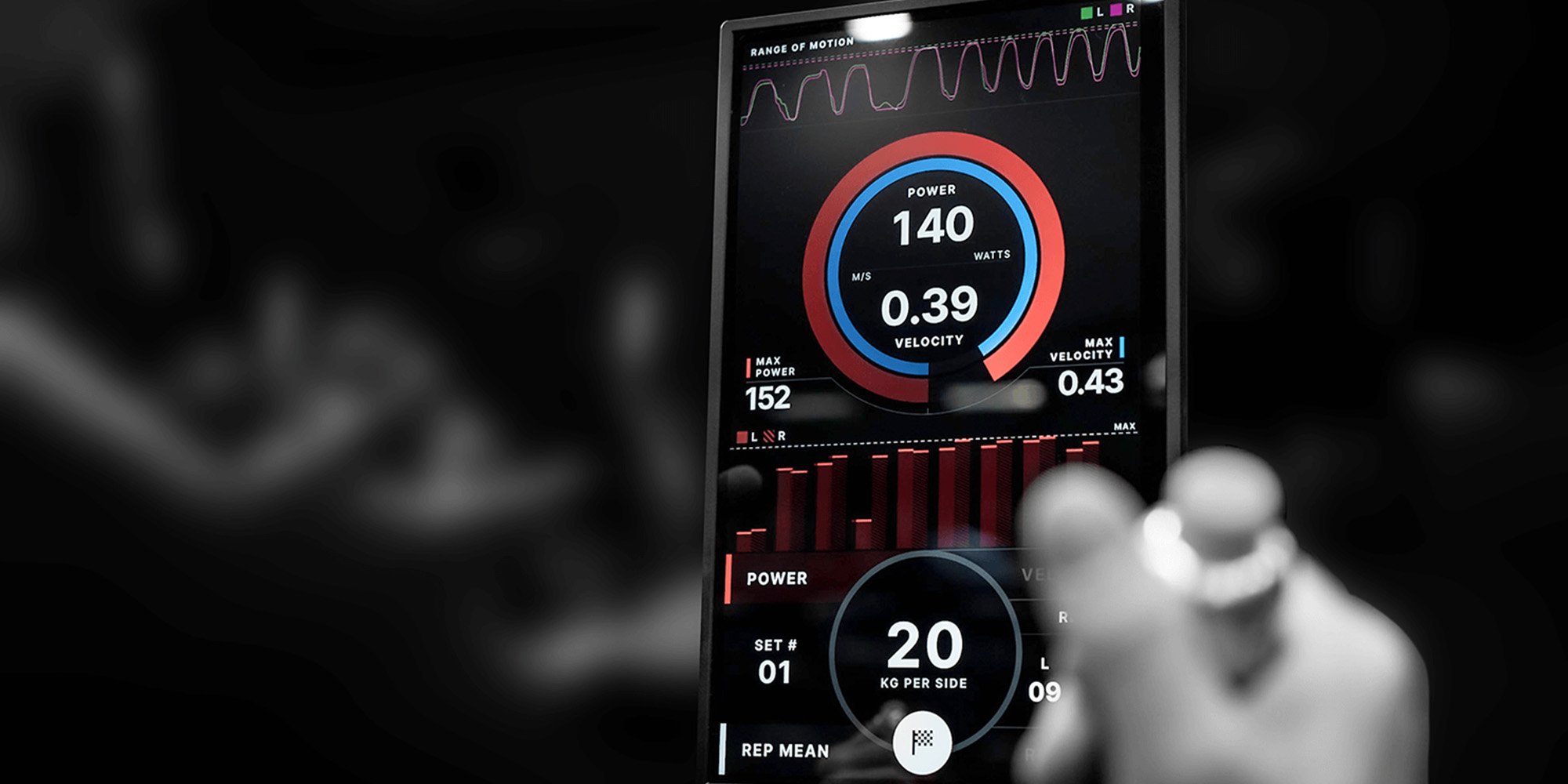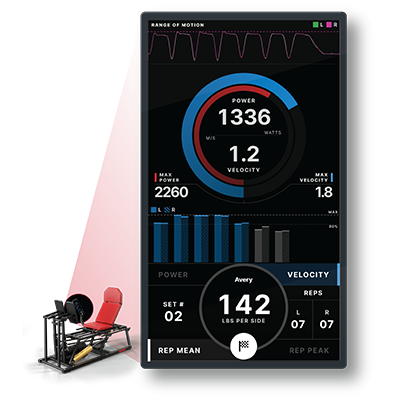5 min read

A Guide to Power Training for All Levels: Benefits, Techniques, and Tips
Power is a critical component in many athletic and daily activities, serving as the bridge between strength and speed. Whether you're an elite athlete, a weekend warrior, or an older adult aiming to maintain independence, developing power can significantly enhance your performance and quality of life. In this article, we delve into the science of power and explore its importance across different demographics, outlining how Keiser equipment can be used to effectively train for maximal power.
People often think about power as an explosive movement only. However, every movement we make involves power, whether it be fast or slow. Lifting a pinky finger involves power. Getting up from a chair involves power. Power is anything with both a force and speed component.
Power, Scientifically Speaking
Power, in scientific terms, is simply the product of force and velocity. Power can be increased with a proportional increase in either variable. Power, measured in Watts, can also be described as work done over time. Decreasing the amount of time in which work is performed will result in increased power. For our purposes it is best to think of force as the resistance one is overcoming. With that in mind, we can increase our power output by increasing the resistance or the speed of movement.
 Targeting Power
Targeting Power
Experts in human performance constantly develop and implement diverse training programs. However, it is crucial to acknowledge that these programs are not merely products of subjective creativity. They are instead backed by purpose and a systematic thought process to elicit targeted responses.
To optimize training, it is important to focus on developing the five trainable qualities. These qualities include speed, power, strength, muscular endurance, and muscular hypertrophy. Each of these qualities plays a unique role in performance and overall fitness. By targeting these qualities through appropriate training methods and exercises, we can enhance performance across a wide range of activities and sports.
GET CERTIFIED
Learn periodization & programming tailored to Keiser equipment. Get certified today.
Learn More
Targeted Training Variables
When training for power, several key variables must be considered:
- Frequency: 2-3 times per week
- Tempo: High effort concentric phase with controlled or fast eccentric phase
- Sets: 3-6 per exercise
- Reps: 1-5 per set
- Dropoff: 10-20% Velocity or Power
- Rest: 2-3 minutes between sets
Following these guidelines will ensure a targeted physiological response, resulting in an increase in power capabilities. Additionally, by manipulating these variables, you can tailor your training to a spectrum of power qualities, emphasizing either force-biased (heavy power) or velocity-biased (light power) development.
Power on Keiser
Understanding how to train for power on Keiser begins with grasping key concepts such as Keiser Optimal Power Resistance (KOPR) and the power curve. The power curve is a graphical representation that shows the relationship between resistance and peak power production. It is created by progressively increasing resistance from very light to very heavy in an effort to see how peak power output is affected by changing the resistance. KOPR is the specific resistance at which an individual can generate the highest peak power output. Efficient and easy to implement, every piece of Keiser Resistance Equipment has a 6-Rep Test to estimate KOPR built in to the display. This resistance can be used to best train for power. This balance between force and speed is crucial for optimizing power development and understanding how to truly target power as a trainable quality.
as Keiser Optimal Power Resistance (KOPR) and the power curve. The power curve is a graphical representation that shows the relationship between resistance and peak power production. It is created by progressively increasing resistance from very light to very heavy in an effort to see how peak power output is affected by changing the resistance. KOPR is the specific resistance at which an individual can generate the highest peak power output. Efficient and easy to implement, every piece of Keiser Resistance Equipment has a 6-Rep Test to estimate KOPR built in to the display. This resistance can be used to best train for power. This balance between force and speed is crucial for optimizing power development and understanding how to truly target power as a trainable quality.
Another test for power is known as the Keiser Maximal Power Test or KMPT. This test uses the KOPR resistance to assess the highest power output that can be achieved for that particular movement. By using KOPR to perform the KMPT, users are able to assess power output and track improvements over time.
Additionally, both the A300 and A400 displays drive intent in real-time, encouraging higher quality reps and a competitive, high effort. The A300 provides essential data on peak power output through its display screen. Expanding on these features, the A400 line offers more sophisticated feedback and analysis on average and peak power, average and peak velocity, and range of motion. These metrics allow for precise adjustments to training intensity and volume as well as providing immediate feedback for improvement within a workout.
Why Train for Power?
Athletes
Let's start with what most people already know - for athletes, power is indispensable. It enables explosive movements, such as sprinting, jumping, and throwing, which are essential in many sports. Training for power enhances performance by improving the rate at which an athlete can produce force, directly translating to better athletic outcomes.
While different athletes may prioritize different training goals, power remains a crucial component for success. Even bodybuilders, who primarily train for hypertrophy (muscle growth), can enhance their muscle efficiency and overall performance by incorporating power training into their routines.
Most athletes will see their greatest performance gains by increasing their ability to exert high forces at high speeds, effectively enhancing high-power movements. However, the optimal balance between force and velocity can vary depending on the sport and individual athlete.
Now imagine two different golfers. The first golfer is large and muscular, ripping drives with a strong but less than graceful swing. The second golfer is leaner yet quick and snappy, boasting a very fast swing. Both athletes drive the same distance, demonstrating similar levels of power. The difference lies in how they generate that power. The first golfer's swing exemplifies force-biased power, relying on strength to generate clubhead speed. The second golfer demonstrates velocity-biased power, prioritizing speed and technique. Both approaches can be effective, but understanding these distinctions allows athletes to tailor their training to their individual strengths and weaknesses, ultimately enhancing their performance on the course. This is where training at different points of the power spectrum, focusing on either heavy power (force-biased) or light power (velocity-biased), can be beneficial.

Weekend Warriors
Even if you're not a professional athlete, power training can elevate your fitness. For weekend warriors—those who engage in recreational sports or fitness activities—enhanced power can lead to better performance, reduced injury risk, and greater enjoyment of physical activity. But it doesn’t have to be that serious or focused. If you are spending your highly valued time in the gym doing the same strength or hypertrophy work, it will become less and less of a stimulus to your body’s adaptation responses. Incorporating periodization—systematically planning training phases—is essential for continuous power gains. Periodization helps manage fatigue, reduce the risk of overtraining, and ensure that training remains effective over time. Try changing things up by focusing on power or speed for a month. You will force your body to adapt, and your pickleball or golf-game might just thank you.
Age Considerations
Recall that even movements as simple as getting out of a chair require power. Simple daily activities and movements like this are taken for granted until we get older. As we age, there's a natural decline in muscular mass, known as sarcopenia, and muscular power, a condition known as powerpenia. This loss of power can lead to decreased functional abilities and increased risk of falls and injuries. However, specific power training can mitigate these effects, helping older adults maintain their independence and quality of life.
Training Plans
Training plans can vary from complicated to simple, depending on the individual and their needs. Below is an example of one way to train for power using the drop-off feature on our 400 line. There are a variety of exercises, set-rep schemes, and other strategies that can help target power. It is important to note, that no matter what plan you choose, to be sure to stay within the guidelines of power training as outlined earlier.

Download Keiser's free Programming and Periodization workbook including the program above (see the "Wk1-4_Power tab"), schedule templates, weekly programs across all training themes, and more.
Optimizing Power with Keiser
Power is a multifaceted component of fitness that plays a vital role in athletic performance, functional ability, and overall health. No matter who you are and what your goals are, power training should be a key part of your exercise regimen. With the advanced features of Keiser equipment and a well-structured training program, you can optimize your power output and achieve your performance goals.

Subscribe to Keiser's FREE publications
Receive tips, articles, and tools to improve human performance via email.